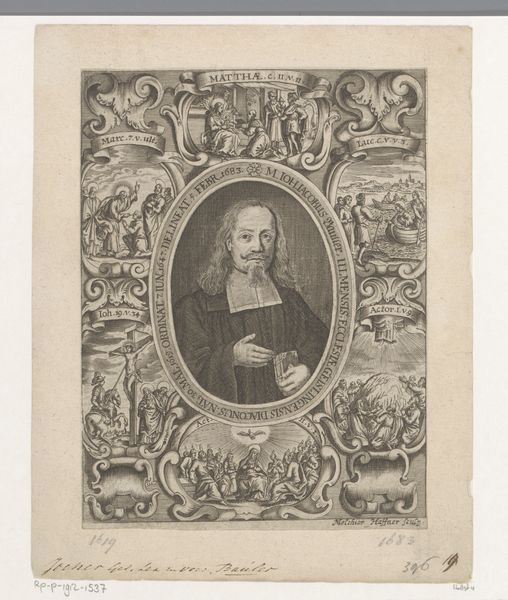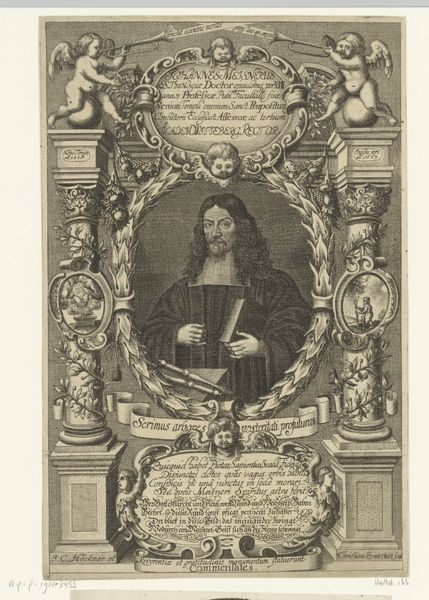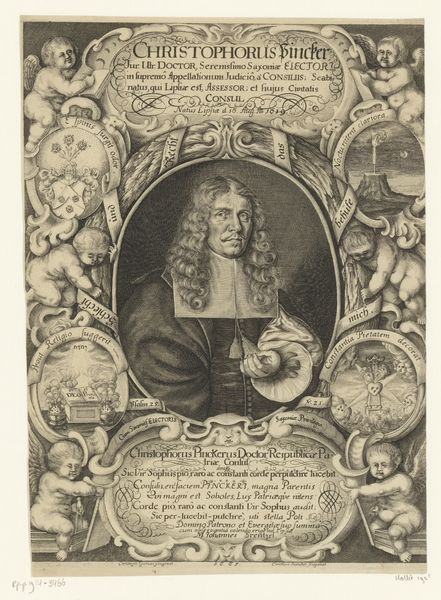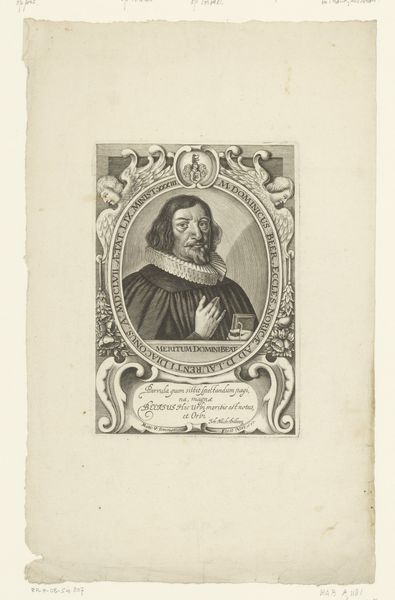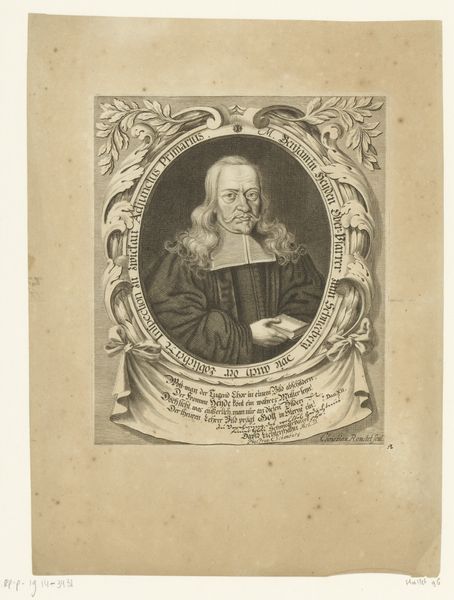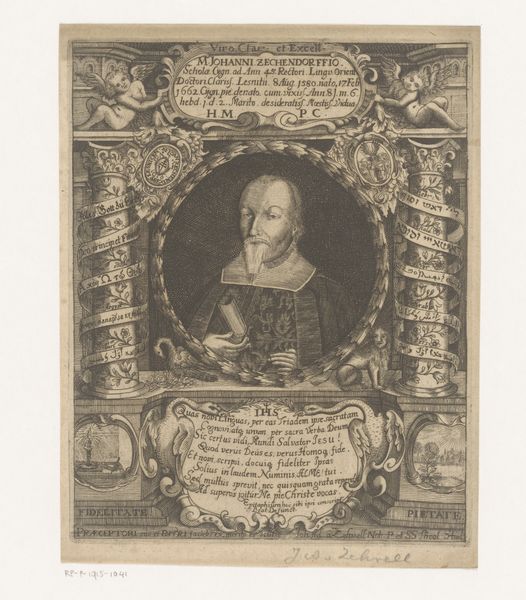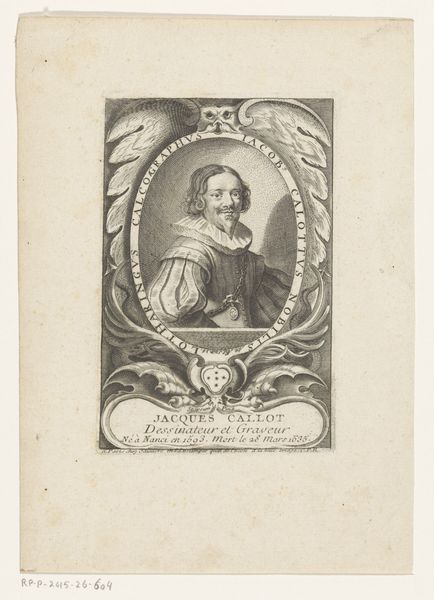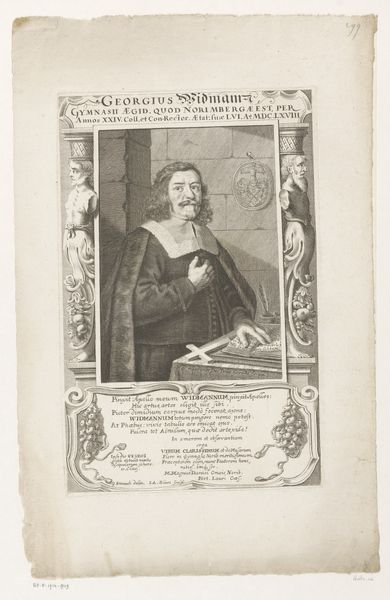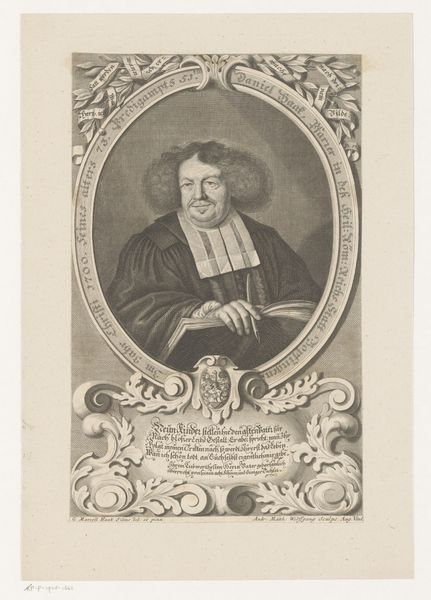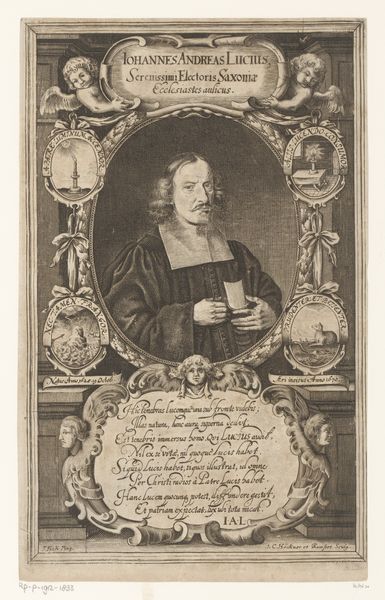
print, engraving
#
portrait
#
baroque
# print
#
old engraving style
#
history-painting
#
engraving
Dimensions: height 297 mm, width 221 mm
Copyright: Rijks Museum: Open Domain
Curator: Here we have a print titled "Portret van Nicolaus Pfretzschner" created in 1663. The engraving is the work of Johann Caspar Hoeckner, and it's currently held at the Rijksmuseum. Editor: My initial reaction is that it has such an intense, ornate quality. It looks very deliberate in its composition, almost suffocatingly detailed. Curator: Indeed. Let’s examine that density of detail. Note how the composition uses circular and rectangular forms to structure the image. The central oval frames Pfretzschner's likeness, providing focus, while the surrounding ornamentation fills the remaining space. There’s an evident commitment to filling the void. Editor: Beyond the composition, all these swirling motifs tell such a story. See the symbolic elements around the central portrait: the crest, the tower, the cityscape, even the winged putti at the bottom. Each emblem must hold some key to Pfretzschner's life or standing. Curator: Precisely. Consider the symmetry: the paired cartouches above and below the portrait, and flanking each side. Hoeckner’s deliberate construction reinforces the subject’s societal importance. It speaks of order, status, and controlled power. Editor: It’s all visual rhetoric designed to project authority, I suppose. Look at the image of the flaming heart— a potent emblem for religious devotion, I would hazard, paired in contrast with the heraldic shield featuring the eagle motif denoting worldly power and authority. The contrast offers insight into the subject’s complex persona. Curator: The rendering also uses a meticulous level of line work and hatching to suggest depth and volume. See how this contrasts to flatter spaces. It builds up the sense of texture. Editor: Texture that amplifies its somber tone. It strikes me as a formal, almost severe work. Despite the presence of cherubic figures, a pervading solemnity persists. Curator: It’s interesting how your reading emphasizes the emotional gravitas. My attention is more toward the print’s complex arrangements and carefully rendered forms. Editor: That's what makes analyzing art such a worthwhile endeavour; each interpretation can reveal a richer appreciation. I leave here thinking about Pfretzschner, and all those symbolic fragments hinting at his character. Curator: And I'm reflecting on the calculated architecture and construction within the overall composition—revealing to us Hoeckner’s deliberate craft.
Comments
No comments
Be the first to comment and join the conversation on the ultimate creative platform.
